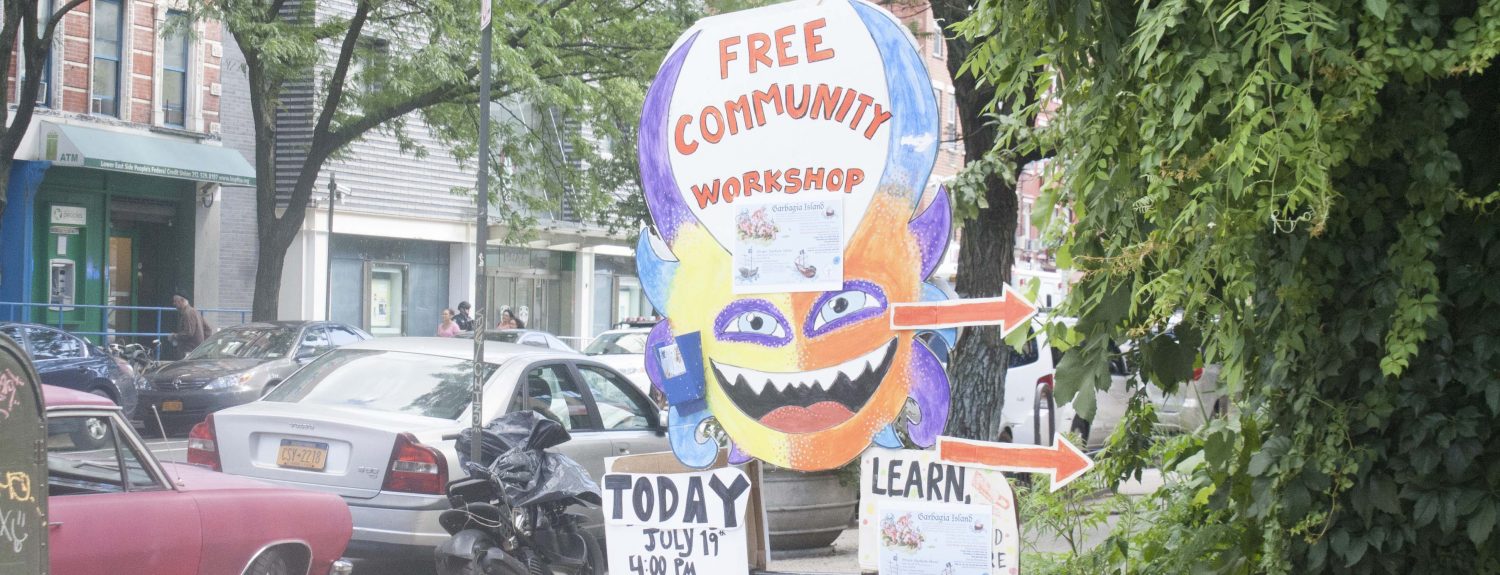Community
Arts-based Activism at Loisaida Aims to Stop “Harmful” Changes to the Lower East Side
By Lisseth Aguilar
Spectrum staff
Walking down a stretch of Third Avenue on the Lower East Side, the street scenes transform from those of people wining-and-dining at outdoor cafes to community gardens smack in the middle of blocks of sometimes rundown apartment buildings and homeless people camped out on the sidewalk.
Persons with less money are having a harder time remaining in the neighborhood, which, for decades has been heavily Puerto Rican. And that has prompted the artists who double as activists at Loisaida to use their artistic skills to combat change, including the arrival of more monied residents to the neighborhood, they view as harmful.
“Bringing attention … and consciousness to these places that may no longer be here … if we don’t take care of them and do something about it … is what we’re doing,” said Puerto Rico-born Zule Alejandro, 28, one of the lead artists at Loisaida. She moved to New York full-time three months ago; and, last May, while in New York with a Puerto Rican artists collective attending an Art Dealers Association event, attended her first Loisaida Festival.
From her place on staff at Loisaida—that name is Spanglish for Lower East Side—she has spent much of her time, so far, helping to launch Loisaida’s first summer program, Garbagia Island. It aimed to teach a political history of the Lower East Side and about the life of Carmen Pabon, who helped launch Loisaida and the Nuyorican Poets Café; fed homeless people through community gardens she developed on the Lower East Side; and undertook various other community organizing campaigns.
Garbagia Island included a series of workshop for children and adults focused on how to “upcycle,” changing recycled things into usable things, including clothing. The program ended with a “pirate fashion show.”
“[Our] open studio brings the concept of equality, activism and Puerto Rican culture that [workshop participants] can use for their designs,” Alejandro said. “I’m creative myself, so conceptualizing an idea for this project with these things will create a story.”
“What these young activists are doing,” said Lower East Side resident and community organizer Sheila Jamison, public relations director at the Museum of Reclaimed Urban Space, “represents the changing landscape of New York. “I’m not Puerto Rican myself, but this fashion show will make a political statement whether people see it or not.”
Before a wave of Puerto Ricans began flowing into the neighborhood in the 1960s, the Lower East Side mostly was made up of German and other Eastern European immigrants. Many of those working class Europeans eventually moved elsewhere in Manhattan. As that change happened, high crime and poverty rates, abandoned buildings, drug-dealing and addiction and other damage hit hard on the Lower East Side, which also has had periods when those issues were less of a problem.
More recently, according to the New York University Furman Center’s State of New York City’s Housing & Neighborhoods 2015 report, average monthly rent in the area rose from $775 in 2000 to $1,019 in 2014 on the Lower East Side, where, according to the 2013 New York City Census, 62.2 percent of residents were Puerto Rican. By 2014, the average monthly rent for all of Manhattan was $1,482.
Artist, Loisaida member and Lower East Side resident Rolando Politi, 70, is one of the people concerned about rising rents.
“I came here from Italy over 30 years ago and have lived here ever since,” he said. “I’ve seen the neighborhood change from a slum to the rich place it is [becoming now].”
He has made art of out some of the empty food cans, plastic bottles and other trash he has been collecting for almost 20 years. Some of it—reshaped, welded together and painted—decorates the fence top at La Plaza Cultural Community Garden.
He is concerned that New York City officials plans to replace the fence in the coming months. “It’s a shame because they’re tearing down history,” Politi said. “I don’t think there is anything wrong with the fence.”
Daniela Fabrizi, 28, and another member of the staff at Loisaida, said it’s important to be concerned about change on the Lower East Side. Challenging some of the changes that she views as destructive is her way of contributing to and keeping the area’s activism going.
“Activists of 20, 30 years ago did what we’re doing and look what happened because of it,” she said. “ … We call Carmen Pabón the ‘Mother Teresa’ of Loisaida.”
“They were angels,” Alejandro added, “that went around helping people who needed a place to stay. We are the people living here, and it is important to be conscious of where you are … It gives a message of empowerment … People here are going to take a stance.”


